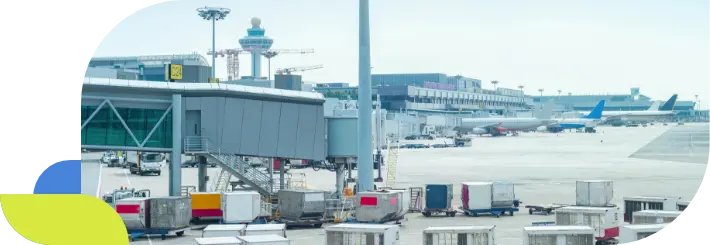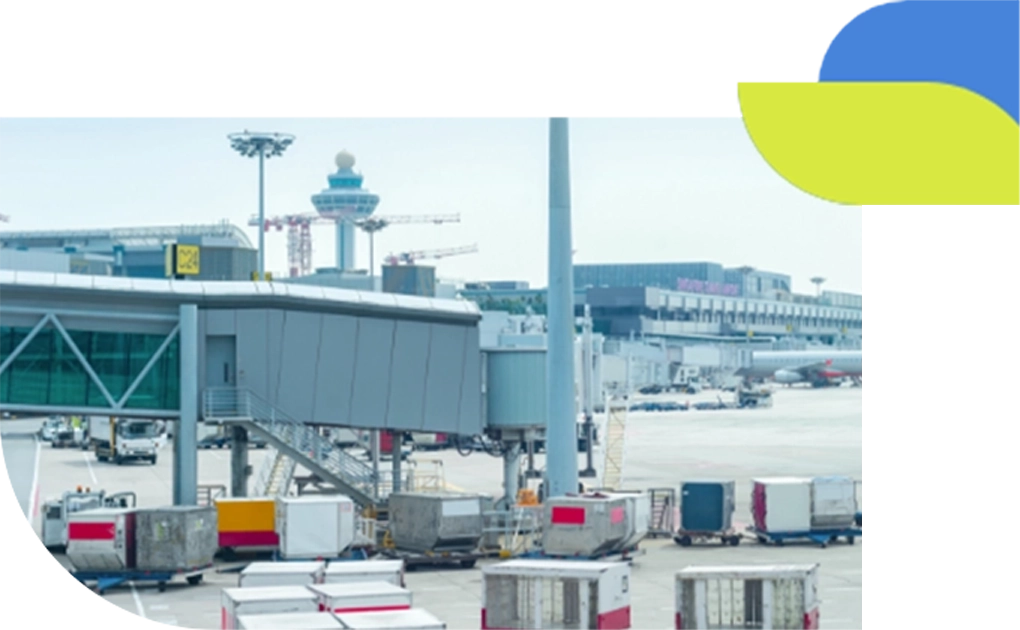Readying the runway for Singapore aviation’s transition to green energy
The aviation industry as a whole has seen a marked increase in its contribution to global carbon emissions, particularly due to post-pandemic recovery. Before the pandemic, a rise of 2% per year was estimated, but since then, projected carbon emissions have now risen to 22% per year by 2050 if there is no intervention1. Along with the release of Singapore’s 2030 Green Plan and 2050 Net Zero goal, the Civil Aviation Authority of Singapore (CAAS) also released its Singapore Sustainable Air Hub Blueprint in 2023 accordingly, to map out Singapore’s steps to reducing aviation emissions.
The challenge for Singapore is how we can commit to our green goals while staying commercially competitive within the Asia-Pacific region. Therefore, as Changi Airport Group (CAG) announced its $3 billion plan to improve airport infrastructure capacity2, it’s not surprising that several upgrading plans also included energy efficiency improvements3.
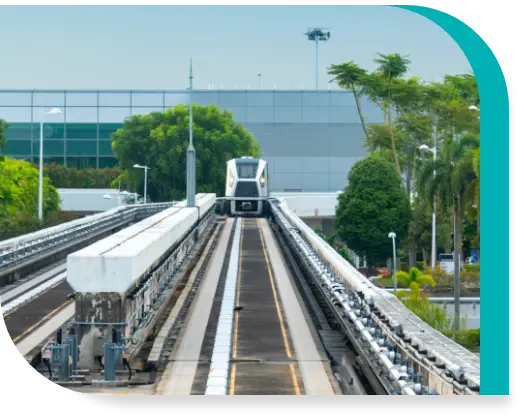
One of Changi Airport Group’s biggest and most immediate plans, together with the Civil Aviation Authority of Singapore (CAAS) and the Ministry of Transport (MOT), will be to start building the new Changi Airport Terminal 5 (T5) in 20254. This terminal will be designed to handle about 50 million passengers per year, and it will also be built to be a Green Mark Platinum Super Low Energy Building (SLEB) as certified by the Building and Construction Authority (BCA)4. Solar panels will be installed, and smart building management systems and district cooling, combined with thermal energy storage will be deployed in the terminal building to reduce carbon footprint4. T5 will also be ready for viable alternative fuels including the use of Sustainable Aviation Fuel (SAF), and for the provision of fixed ground power and cooling for aircraft parked at the gates4. On top of that, T5 will serve as a platform to explore innovative technological solutions that simultaneously improve passenger experience while lowering energy consumption, such as autonomous vehicles and robotic handling of baggage4.
Meanwhile, to address increasing energy demands while reducing carbon emissions in its existing buildings, Changi Airport Group has embarked on installing what will be the largest single-site photovoltaic (PV) system that utilises the rooftops of the airport’s buildings5. When completed in 2025 the system will have a capacity of 38 MWp5. This initiative also includes installation of solar panels at Seletar airport3.
Aside from that, the airport will aim to have its entire vehicle fleet operate on cleaner energy sources by 20403, while CAAS, among its first sustainable initiatives, will be focusing on bolstering the use of Sustainable Aviation Fuel (SAF) in aircrafts.
One of Changi Airport’s biggest carbon emissions challenges is that air-conditioning alone accounts for 60% of the building’s total electricity consumption6. Efforts to curb this include upgrading air-conditioning systems and using solar films on windows. However, this isn’t enough, and it has been suggested that solutions such as district cooling can be adopted as well3 to maximise energy savings.
This is a viable option as there has already been successful deployment of district cooling systems in Singapore such as the Marina Bay District Cooling Network. Built and managed by SP Group, this system successfully reduces carbon emissions by nearly 22,000 tonnes annually. Another good example is SP Group’s ongoing partnership with STmicroelectronics to build, own and operate Singapore’s largest industrial district cooling system, which when completed by 2025, will be able to reduce up to 120,000 tonnes of carbon emissions annually.
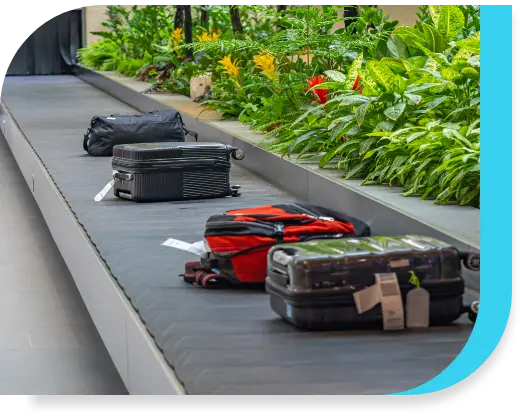
The airport space, however, is not the only focus for decarbonisation initiatives within the aviation industry. Aviation companies such as Airbus have embarked on their own efforts too, including deploying SP’s GET® Control in their Airbus Asia Training Centre. GET® Control is a self-learning building intelligence system that utilises AI and the Internet of Things (IoT) to optimise air-conditioning and energy efficiency, based on occupancy and weather conditions, allowing for effective cooling without wastage. Since its implementation, Airbus has already seen almost 50% reduction in electricity consumption at its training centre.
Have green efforts been making a difference so far? The key identifier is being able to monitor and quantify carbon reductions. This is where SP’s GET® (Green Energy Tech) suite of solutions comes in. GET® Insights is one of its solutions that provides real-time tracking of overall utilities consumption and establishing patterns that allows it to detect irregularities or provide information on unexpected consumption. Over time, this provides greater control over energy usage and operational costs. For larger-scale air-conditioning challenges, such as that in airports, GET® Control can provide a solution. It is a smart building management system that utilises data from smart sensors and monitors, AI and IoT to optimise airflow and efficiency of the building’s air-conditioning system. The bigger the building, the more important it is to maintain control over its cooling efficiencies.
Monitoring technologies such as SP’s GET® suite of solutions is what can help us keep track of carbon emissions as we strive to grow the aviation sector. As noted by Transport Minister Chee Hong Tat at the Changi Aviation Summit during the launch of the Singapore Sustainable Air Hub Blueprint, “…the future of aviation must continue to be a story of growth, balanced with sustainability. Good for people, good for businesses, good for the environment.”6.
This year, on 25 - 27 March 2025, Singapore will host inter airport South East Asia, the airport trade show for the region. It will be an opportunity for Singapore to shed light on its decarbonisation solutions in the aviation industry, as well as learn from other players in the Asian airport community in the shared goal to make airports more sustainable.
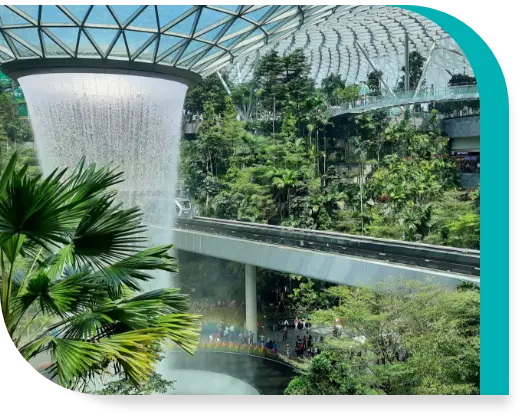
Contact us to learn how SP’s GET® solutions can help you.
Footnotes
1International panel unveils plans to make Changi air hub greener, The Straits Times, September 2022
2$3 billion upgrade: How Changi Airport is planning to stay ahead of the game, The Straits Times, November 2024
3Cleaner energy, improved navigation tools: How the airport and air traffic management sectors will reduce emissions, CNA, February 2024
4Changi Airport to break ground on T5 construction in 2025, passangerterminaltoday.com, September 2024
5Changi Airport gears up to tap on solar power, changiairport.com, May 2024
6International panel unveils plans to make Changi air hub greener, The Straits Times, September 2022
